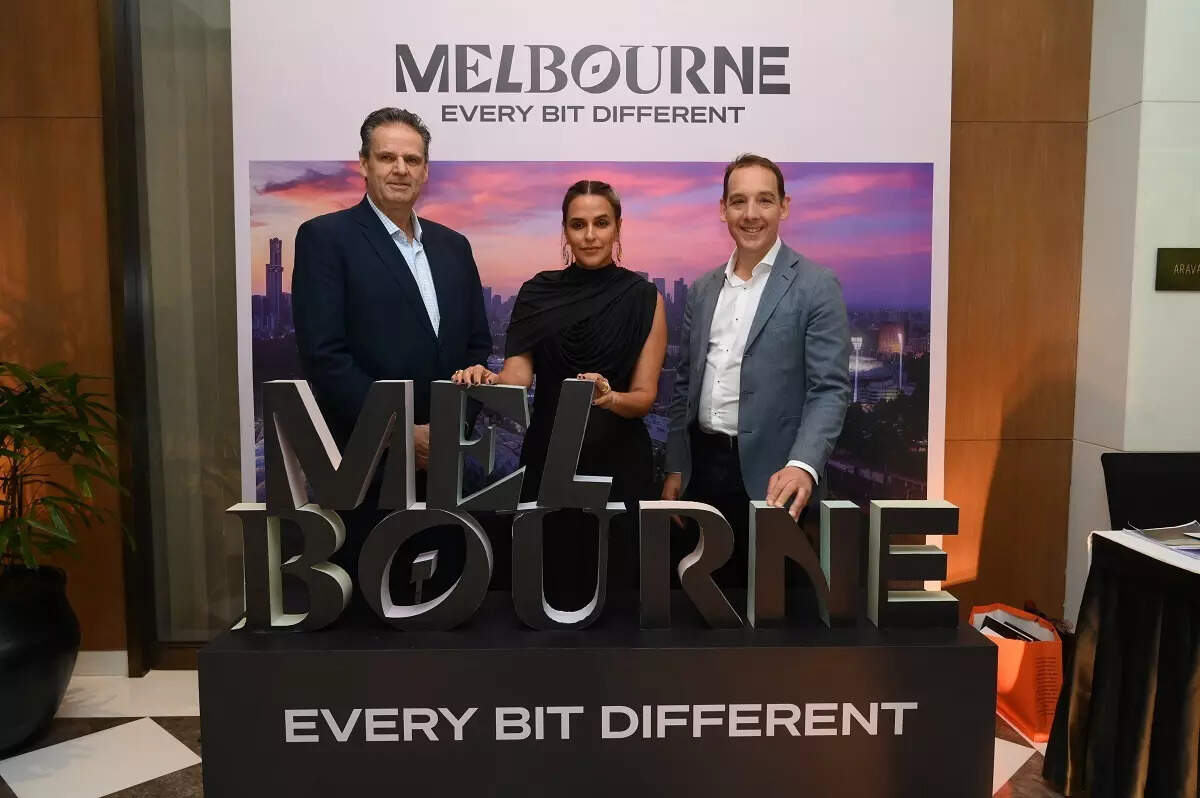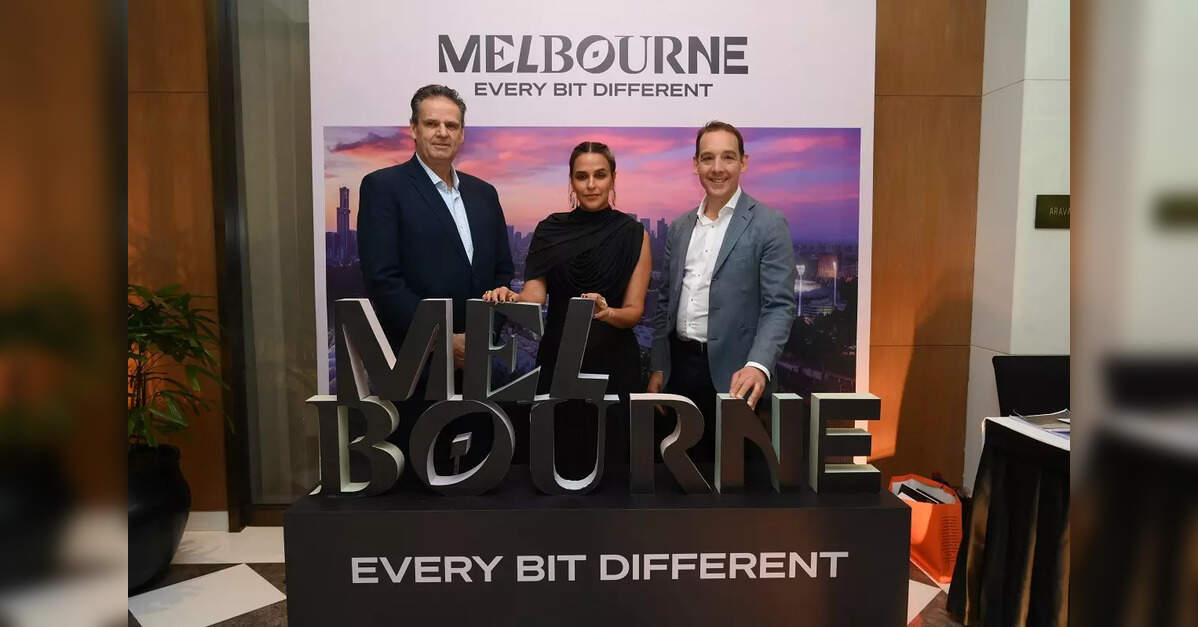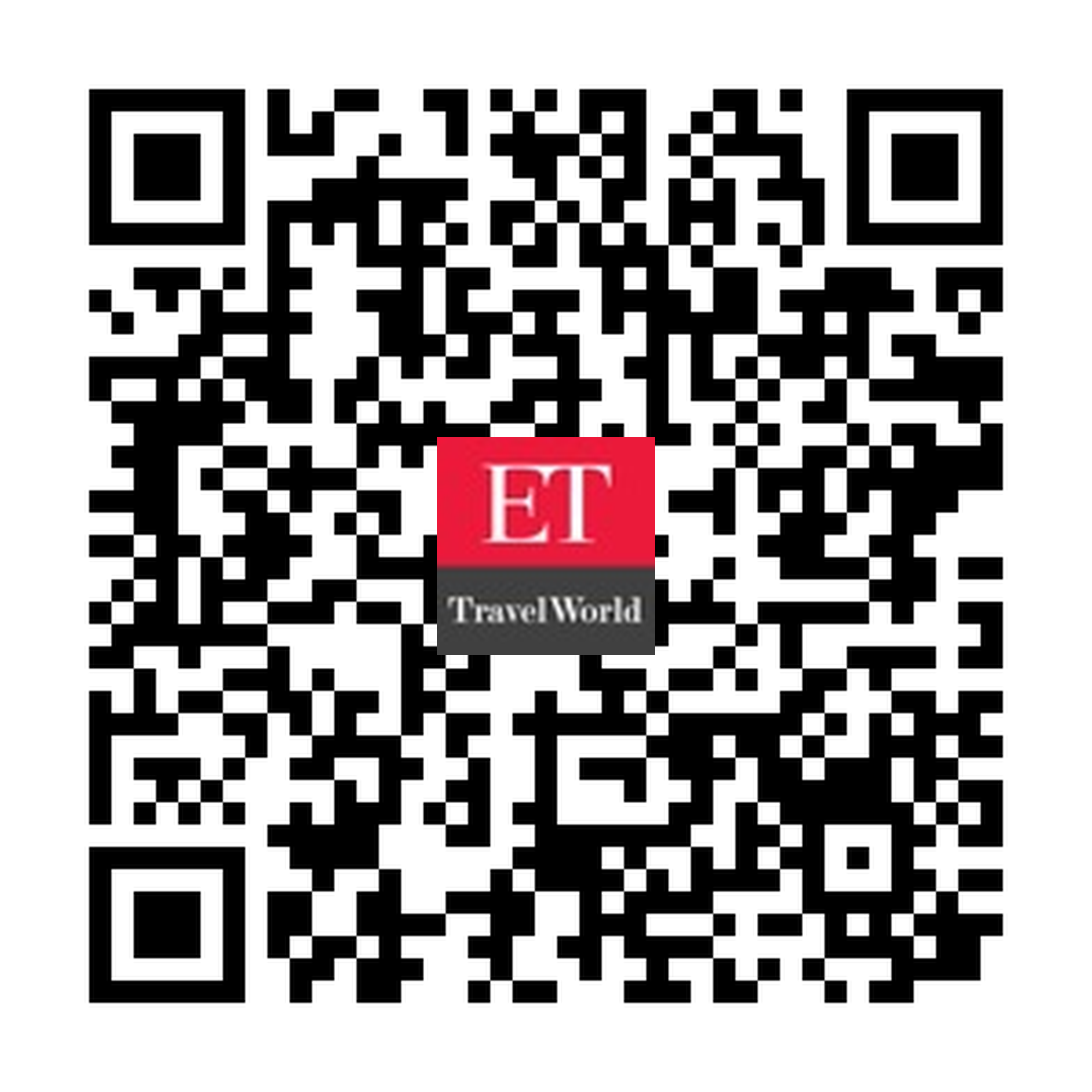
Victoria is sharpening its India focus with an ambitious goal: to double annual visitor arrivals from India from 220,000 to 450,000 over the next few years. In an exclusive conversation with ETTravelWorld, Steve Dimopoulos, Minister for Tourism, Sport and Major Events, Government of Victoria, outlined the state’s multifaceted strategy to strengthen its presence in India, enhance air connectivity, and build lasting trade and cultural relationships anchored in tourism, events, and business exchanges.During his official visit to India, Dimopoulos revealed that Victoria currently welcomes 223,000 Indian visitors annually who contribute $810 million to the state’s economy. The government’s target is to reach 450,000 arrivals, aligning with Tourism Australia’s broader vision for the Indian market.
During the exclusive conversation, he outlined an ambitious roadmap to double Indian visitor arrivals to the state, leveraging Melbourne’s world-class events calendar and tapping into India’s rapidly expanding outbound leisure travel market.
Relationship building at the core
“Part of it is exactly what we’re doing on this trip, which is being in India. In such a massive country, with many states, many languages, you have to be visible. You have to be present,” Dimopoulos emphasised, highlighting the long-term relationship-building approach that distinguishes Victoria’s India strategy.
“India is not a transactional market — it’s a relationship-driven one,” Dimopoulos added. “For Victoria, showing up consistently, being visible and genuinely engaged, has been key to building trust with Indian partners. It’s about friendship before business.
The minister noted that Indian people value relationships over transactions, which is why Visit Victoria and the Victorian Government have invested years in building genuine partnerships with trade partners in the country.
Deepening the India connection
Victoria’s relationship with India has matured over the past decade, with the state government and Visit Victoria consistently investing in the market through long-term partnerships and cultural collaborations. India is now Victoria’s fastest-growing source market, driven by leisure, student, and MICE travel.
Dimopoulos said the latest India visit by the Victorian delegation — following last year’s trip by the Premier — signals the government’s seriousness about expanding this relationship. “We’ve made it a priority to be present across multiple Indian cities. It’s about understanding not just the tourism trends but also India’s cultural rhythm — its festivals, family travel patterns, and the new generation’s aspirations,” he said.
To that end, the Victorian Government has established an Indian Travel Academy, designed to equip local Victorian operators with the knowledge and tools to effectively engage with Indian travel trade partners. The academy provides structured training on outbound and inbound travel, helping operators graduate through specialized modules focused on the Indian market.
“This is about sophistication in engagement,” Dimopoulos explained. “If our operators are going to sell authentically to India, they need to understand the nuances of the market — the motivations, the cultural expectations, and the diverse regions travelers come from.”
Air connectivity: Unlocking the next phase of growth
Connectivity remains central to Victoria’s growth ambitions in India. Currently, Air India and Qantas operate flights linking Melbourne and Delhi, but limited capacity has constrained growth. The Victorian Government is in talks with multiple carriers to expand options, including exploring the entry of Indian carriers such as IndiGo, which is aggressively expanding its long-haul network.
“Flying directly from India to Melbourne is becoming increasingly attractive,” Dimopoulos noted. “We’ve seen arrivals jump from 180,000 to 220,000 in the last year alone. The demand is evident — now it’s about ensuring the supply of planes matches that appetite.”
He added that increased one-stop connections through partners such as Singapore Airlines, Thai Airways, and Malaysia Airlines have also played a key role. “Every additional route makes Melbourne more accessible, and that’s critical if we want to hit 450,000 visitors in the next few years,” he said.
Events as a global showcase for Victoria
A hallmark of Victoria’s tourism strategy is its unrivalled major events calendar — a blend of sports, entertainment, and cultural showcases that double as international marketing platforms. From the Formula One Grand Prix and Australian Open Tennis to global concerts like Coldplay and Ed Sheeran, Melbourne continues to cement its position as the “Events Capital of the World.”
Dimopoulos underscored how India-focused events have amplified Victoria’s reach in the subcontinent. The India–Pakistan T20 cricket match at the Melbourne Cricket Ground (MCG) drew 100,000 spectators on-site and reached a staggering 600 million viewers across India. Similarly, Kabaddi tournaments and AFL broadcasts in Hindi have showcased Victoria to vast Indian audiences.
“For us, these events work on multiple levels,” he explained. “They attract visitors, build trade relationships, and generate global visibility. When 600 million Indians watch a cricket match held in Melbourne, it’s an unmatched branding moment for Victoria.”
Victoria’s long-term deals with global sporting bodies such as the ICC and the Formula One Group ensure continuity. “We’ve locked in multi-year event partnerships — seven years with ICC, 12 years with Formula One, and extended commitments with the NFL and Boxing Day Test. This consistency gives travelers confidence to plan visits years in advance,” Dimopoulos added.
Driving leisure and MICE growth
While Victoria’s ties with India have long been anchored by education and visiting friends and relatives (VFR) segments, the leisure market is now leading growth. The segment has expanded by nearly 20% in the past year and accounts for the largest share of visitor spend.
“Leisure travel is the heartbeat of the Indian outbound market, and we’re seeing a generational shift,” Dimopoulos observed. “Younger Indians are now more experience-driven — they’re confident, globally aware, and want to discover everything from Melbourne’s coffee culture and music scene to its coastal trails and vineyards.”
The government is also keen to strengthen MICE (Meetings, Incentives, Conferences, and Exhibitions) tourism, where India has emerged as one of the most dynamic post-pandemic markets. Victoria, which holds a 51% stake in its Convention Bureau, is aligning business events with key economic priorities such as technology, medical research, and digital innovation.
“We’ve seen great success with events like Sports Next, where Indian speakers showcased their leadership in sports technology,” he said. “There’s no reason why we can’t host a digital innovation or medical research forum in Melbourne with India’s brightest minds.”
The road ahead: Readiness & resilience
Global travel is poised to surge, with forecasts suggesting 2 billion international trips within the next five years. India alone could generate 90 million outbound journeys by 2035. For Victoria, this represents a massive opportunity — and preparation is key.
“We’re planning not just for gradual growth but for an inflection point,” Dimopoulos emphasised. “Once aviation capacity expands, we’ll see a sharp rise in Indian arrivals. The good news is that Melbourne is ready — we have over 26,000 hotel rooms in the CBD, more than 24 million room-nights annually statewide, and occupancy levels that allow flexibility for expansion.”
As Victoria strengthens its partnerships with Indian airlines, tour operators, and digital travel platforms, Dimopoulos remains confident that the state can not only meet but exceed its targets. “Victoria’s visitor economy is robust, diverse, and resilient,” he said. “Our focus now is to capture the hearts and minds of Indian travellers — not just for one visit, but for many.”


